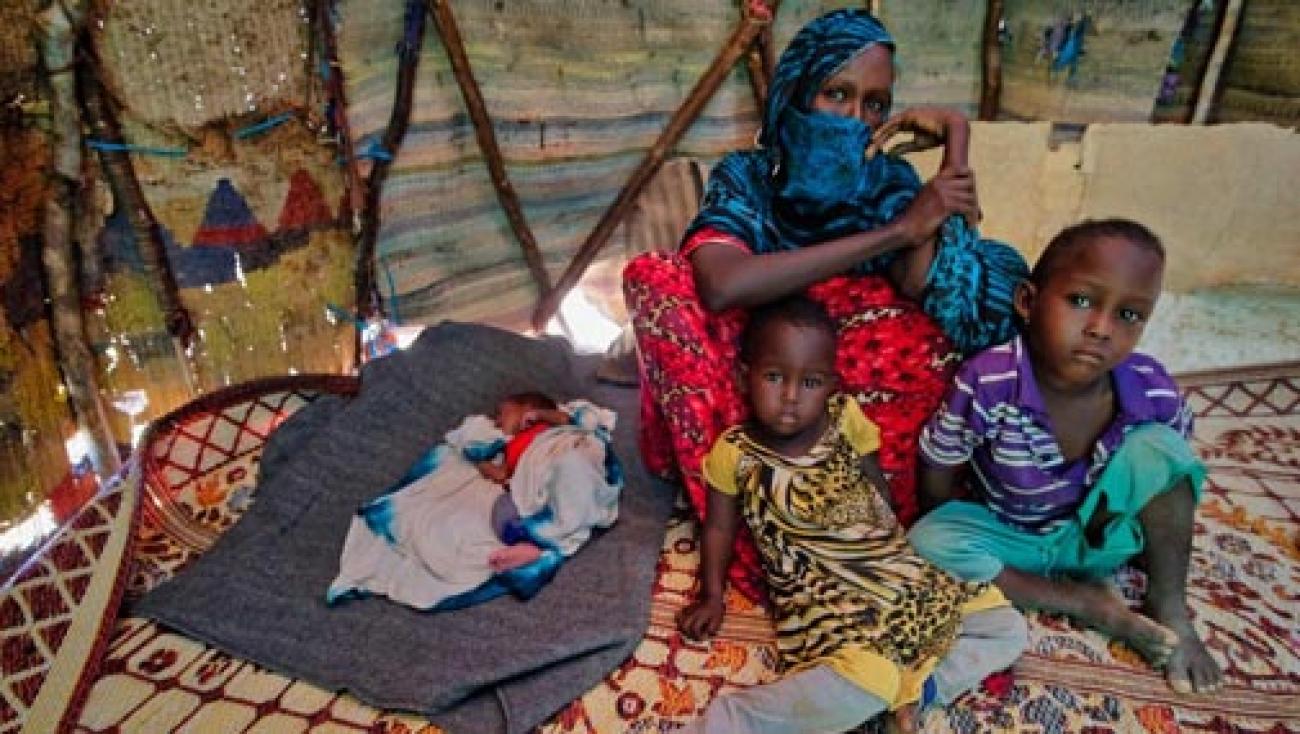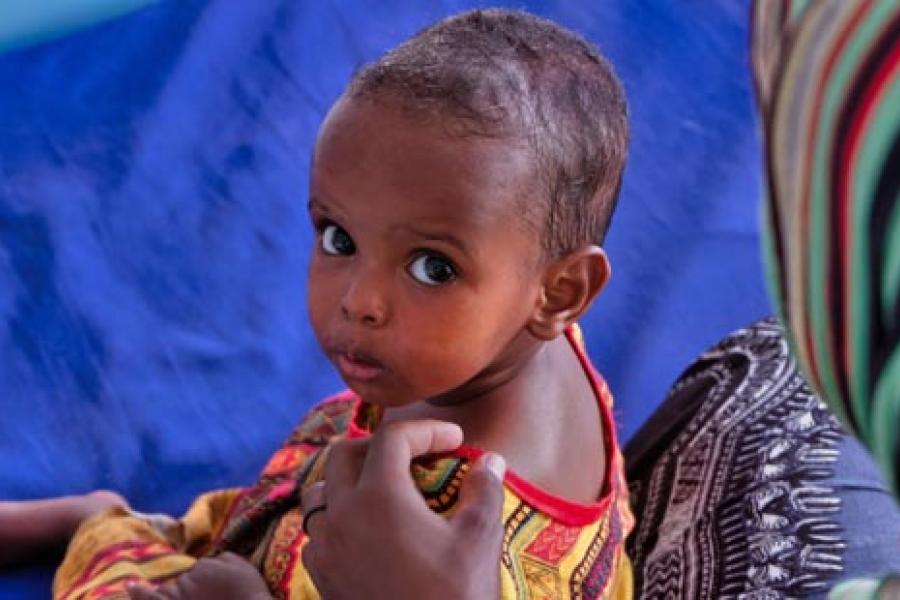Families pushed to the brink as drought persists in Puntland

10-day-old Nacima was not meant to be born in Dungarayo.
By Joe English, UNICEF Communication Specialist
DUNGARAYO, Nugaal, Puntland, Somalia, 4 June 2019 – 10-day-old Nacima was not meant to be born in Dungarayo. Her mother Farhia, cradling her newborn baby girl as she tells me her story, had originally planned to give birth at home, in her village more than 50km away.
Now mother and baby find themselves living in a tent fashioned from reeds and plastic sheeting in a makeshift camp for displaced people in Dungarayo, a town in the Nugaal region of Puntland, along with another two of Farhia’s six children.
Complications towards the end of her pregnancy were behind Farhia’s decision to make the journey to Dungarayo, in order to give birth in the Maternal and Child Health Centre in the town. But it is the worsening drought that has forced her to make the decision to stay in Dungarayo after giving birth, rather than return to her family and her village.
“Before the drought in 2017, my husband and I had more than 100 goats,” she tells me. “Now we have less than 20, and even the animals who have survived are very weak. We have little here, but I cannot return home when there is nothing there. My baby would not survive.”
Her husband remains in their village with their three older children, to look after their remaining animals. Farhia does not know when they will be reunited.
Once again, Somalia is facing a severe drought, threatening the lives of children like Nacima across the country. The failure of the 2019 Gu’ (April-June) rains, following on from poor 2018 Deyr (October-December) rainfall, and unusually hot, dry conditions during the 2019 Jilaal (January-March) has caused widespread crop failure and accelerated decline in livestock productivity, pushing families in the worst-affected areas to the brink.
Last week the UN launched a new drought response plan, highlighting the sheer scale of the challenge - out of 5.4 million expected to be acutely food insecure by July, 2.2 million will be in severe acute food insecurity conditions (IPC 3 and above). As the rains have failed, funding has also started to dry up – the funding provided so far this year ($254 million) is less than 40 per cent of what had been provided by the same time in 2017 and 2018. Assistance has reduced, including in critical WASH, health, nutrition and food security interventions in several drought-affected areas and towns and cities receiving internally displaced persons (IDPs).
In Garowe General Hospital, they’re seeing the impact first hand. Cases of severe malnutrition usually decrease between January and June, as the rains bring relief, but this year the expected drop-off in cases hasn’t happened. The stabilization centre provides round-the-clock support for the most severely malnourished children, as well as those with complications. The hospital serves a population of around 800,000 people in the surrounding region, with mothers travelling more than 100km in some cases.
Bishara 18-years-old, has been in the hospital with her 10-month-old daughter Najma for a week now. The 2017 drought forced Bishara to move to an IDP camp just outside Garowe, as her husband searched for work after losing all their livestock, and the family has remained there ever since.

“Najma was very sick, she wouldn’t eat and was listless and irritable,” Bishara tells me. “I took her to the Mother and Child Health Centre and they told me to bring her here.”
Now, after treatment with therapeutic Plumpy’Nut, a high-energy peanut paste used to treat malnutrition, Najima is eating properly again, and has her energy back, pulling herself up to stand on the hospital bed. All being well, Najima will be discharged shortly, but Bishara worries about her daughter getting sick again. Whilst food remains in short-supply, the access to a borehole providing safe water is a welcome relief for families in the camp.
The difference that a reliable source of safe water can make is hard to overstate. In Baley, a village of around 200 households down a barely-existent dirt track off the road from Dungarayo to Garowe, a UNICEF-supported borehole has changed the lives of the families living there. The solar-powered borehole, constructed following the 2017 drought, provides not only safe water for the community and their livestock, but also allowed the village to irrigate the land around the village and plant crops. The verdant green land around the borehole stands out amidst the sparse scrubland of the surrounding area.

Unfortunately, the high cost of drilling and constructing boreholes means that many communities must still rely on less reliable sources including emergency water trucking, shallow wells or ground water. For every family I speak to, water is their overriding preoccupation.
“There is so much that we need, but if the rains come then I know we can survive,” Mohamed Said, one of the elders in the IDP camp in Dungarayo, tells me. “It is now three years since we last had sufficient rains, but I believe they will come again.” Until they do, it’s crucial that the international community is supported in scaling up its response to prevent the already alarming humanitarian situation deteriorating further.
Link to original story.

